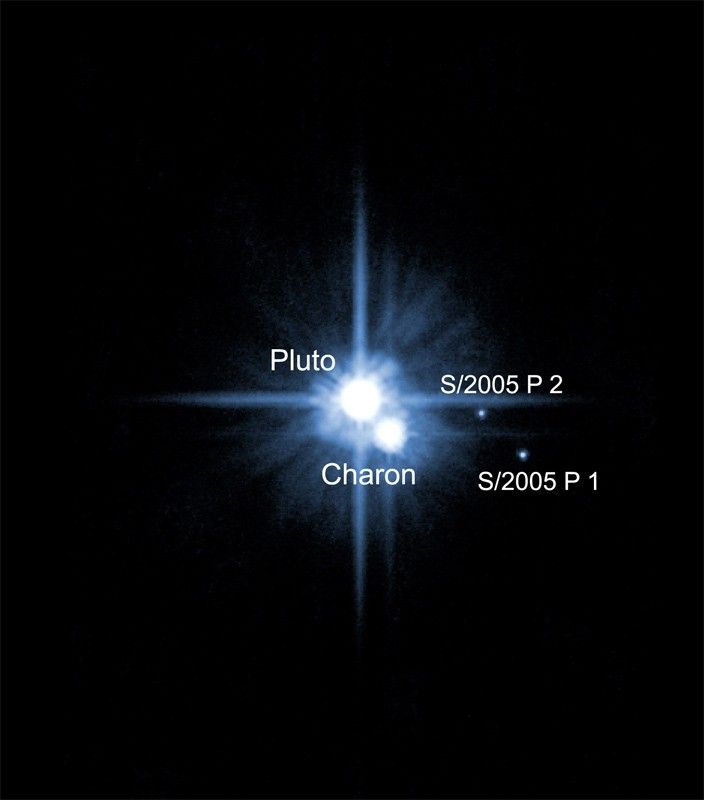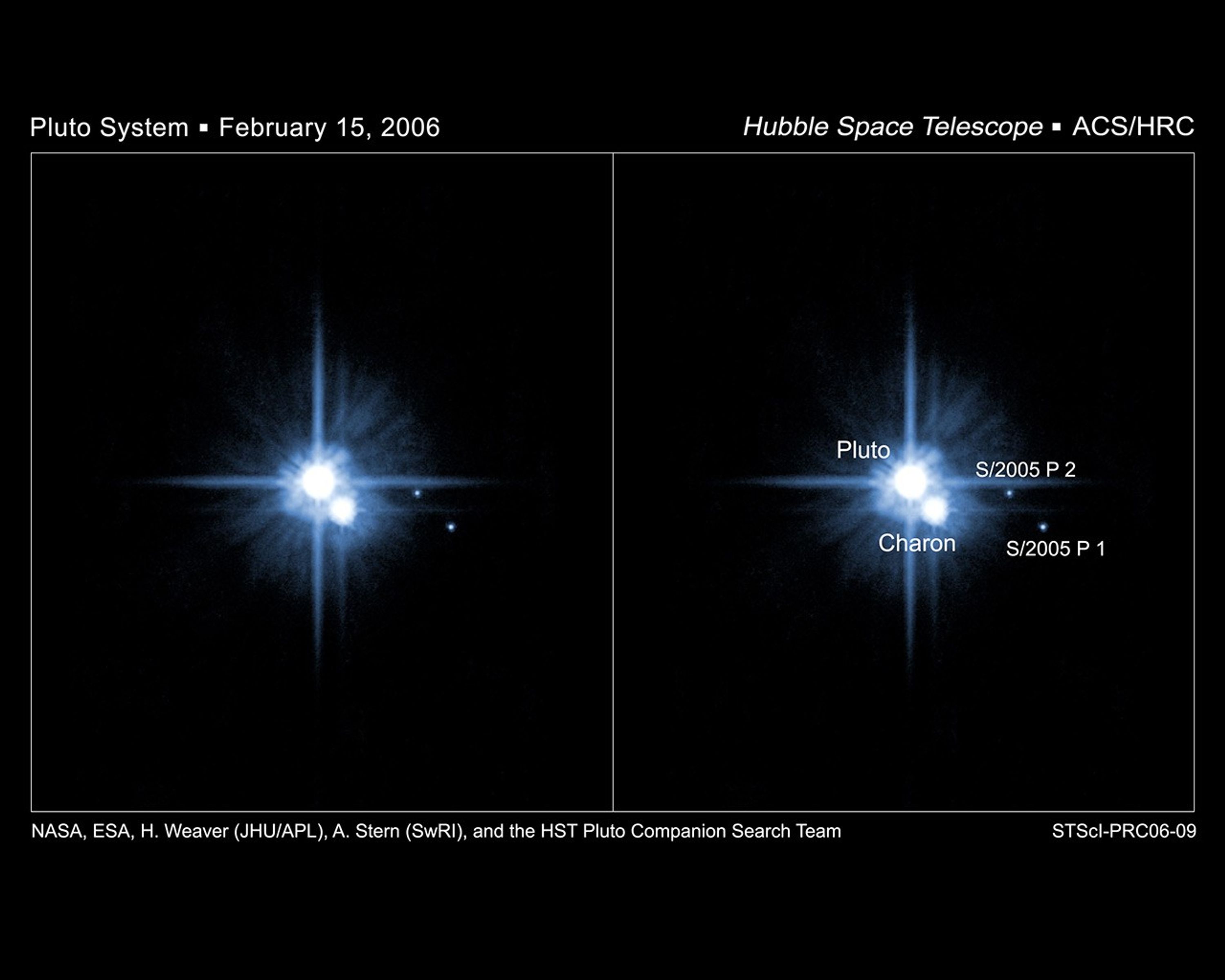1 min read
The Pluto System on Feb. 15, 2006 (Annotated)

About the Object
- DistanceDistanceThe physical distance from Earth to the astronomical object. Distances within our solar system are usually measured in Astronomical Units (AU). Distances between stars are usually measured in light-years. Interstellar distances can also be measured in parsecs.Although its orbit is highly eccentric, Pluto's average distance from the Sun is 39.44 astronomical units (roughly 3.6 billion miles or 5.9 billion kilometers).
- DimensionsDimensionsThe physical size of the object or the apparent angle it subtends on the sky.Pluto has a diameter of roughly 1,416 miles (2,280 kilometers) at the equator.
About the Data
- Data DescriptionData DescriptionProposal: A description of the observations, their scientific justification, and the links to the data available in the science archive.
Science Team: The astronomers who planned the observations and analyzed the data. "PI" refers to the Principal Investigator.These HST data are from proposal 10774: H.A. Weaver (JHU/APL), S.A. Stern and J.R. Spencer (SwRI), M.W. Buie (Lowell Obs.), E. Young, L.A. Young, and A.J. Steffl (SwRI), M. Mutchler (STScI) and W.J. Merline (SwRI). - InstrumentInstrumentThe science instrument used to produce the data.HST>ACS/HRC
- Exposure DatesExposure DatesThe date(s) that the telescope made its observations and the total exposure time.February 15, 2006
- FiltersFiltersThe camera filters that were used in the science observations.F606W (V)
- Object NameObject NameA name or catalog number that astronomers use to identify an astronomical object.Pluto
- Object DescriptionObject DescriptionThe type of astronomical object.Dwarf Planet with Satellites
- Release DateFebruary 22, 2006
- Science ReleaseHubble Confirms New Moons of Pluto
- Credit

Color Info
Color InfoA brief description of the methods used to convert telescope data into the color image being presented.
This image was originally black and white and recorded only overall brightness. These brightness values were translated into a range of bluish hues. Such color "maps" can be useful in helping to distinguish subtly-varying brightness in an image. The colors in this image are not what human eyes would see looking at Pluto.

Compass and Scale
Compass and ScaleAn astronomical image with a scale that shows how large an object is on the sky, a compass that shows how the object is oriented on the sky, and the filters with which the image was made.
Related Images & Videos

Hubble Confirms New Moons of Pluto
EMBARGOED UNTIL: 1:00 pm (EST) February 22, 2006 PHOTO NO.: STScI-PRC06-09 HUBBLE CONFIRMS NEW MOONS OF PLUTO Anxiously awaited follow-up observations with NASA's Hubble Space Telescope have confirmed the presence of two new moons around the distant planet Pluto. The moons were...
Share
Details
Last Updated
Aug 17, 2025
Contact
Media
Claire Andreoli
NASA’s Goddard Space Flight Center
Greenbelt, Maryland
claire.andreoli@nasa.gov





























